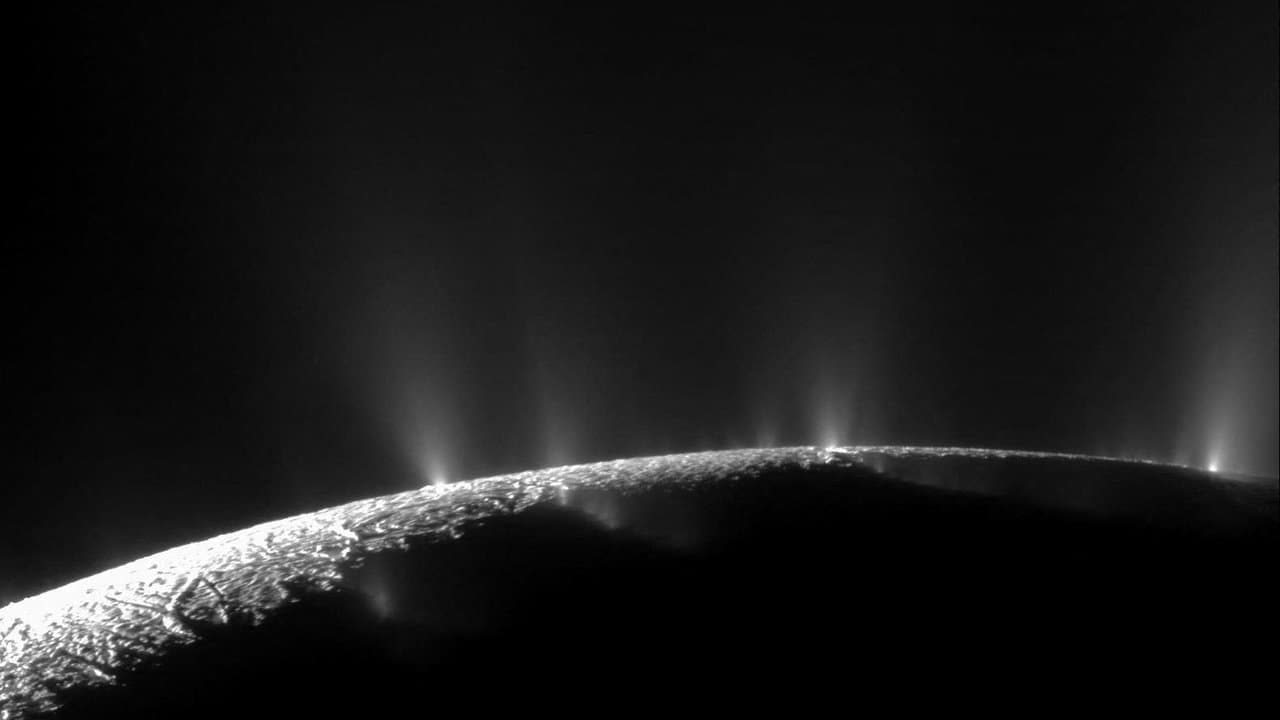A study of data from the Cassini probe, which explored Saturn, its rings and moons from 2004 to 2017, has determined the presence of phosphorus in an ocean beneath the icy surface of Enceladus, one of Saturn’s moons.
The long search for extraterrestrial life has received a major boost: Phosphorus, an essential element for life, has been discovered in an ocean beneath the icy surface of Saturn’s moon Enceladus.
The discovery, based on a study of data collected by NASA’s Cassini probe, was published Wednesday in the prestigious journal. nature.
The Cassini probe explored Saturn, its rings and moons from 2004 until its destruction in the gas giant’s atmosphere in 2017.
“This is an amazing discovery for astrobiology,” said Christopher Glenn. Southwest Research Institute, one of the authors of the article. “We found abundant phosphorous in ice plume samples ejected from the subterranean ocean.”
The first discovery “in a place other than Earth”
Geysers at Enceladus’ south pole spit tiny, icy particles into space that feed Saturn’s E ring, the giant planet’s outermost and thinnest.
Scientists have already detected minerals and organic compounds in the ice particles released by Enceladus, but not phosphorous, which is an essential component of DNA and RNA that is also found in the bones and teeth of humans and animals, and even in ocean plankton. In fact, life as we know it would not be possible without phosphorus.
Geochemical models predicted the presence of phosphorus in these particles, a prediction published in a previous paper, but not yet confirmed, Christopher Glenn notes.
“This is the first time that this elemental element has been detected in an ocean other than Earth,” added the study’s lead author, Frank Postberg, a planetary scientist at Freie Universitat Berlin, in a NASA statement.
For this discovery, the authors combed through data collected by the Cassini probe’s Cosmic Dust Analysis instrument. They confirmed the results by conducting laboratory experiments to prove that the ocean of Enceladus contains phosphorus in various forms that are soluble in water.
Deposition of water ice on the moons
Over the past 25 years, planetary scientists have discovered that there are many worlds with oceans under a surface layer of ice in our solar system.
There is, for example, over Europa, the moon of Jupiter; On Titan, the largest of Saturn’s moons, and even on the dwarf planet Pluto.
Planets with surface oceans, like Earth, must be far enough from their star to maintain life-sustaining temperatures. The discovery of worlds with subterranean oceans increases the number of potentially habitable planets.
“With this discovery, it is now known that Enceladus’ ocean meets what is generally considered to be the first necessary condition for life,” said Christopher Glenn. “The next step is clear – we have to go back to Enceladus to see if the ocean is already habitable for life.”
The most important items

“Music guru. Incurable web practitioner. Thinker. Lifelong zombie junkie. Tv buff. Typical organizer. Evil beer scholar.”






More Stories
A large manufacturing project awaits space in the industrial zone
According to science, here are officially the two most beautiful first names in the world
Green space, 100% pedestrianized: DIX30 reinvents itself